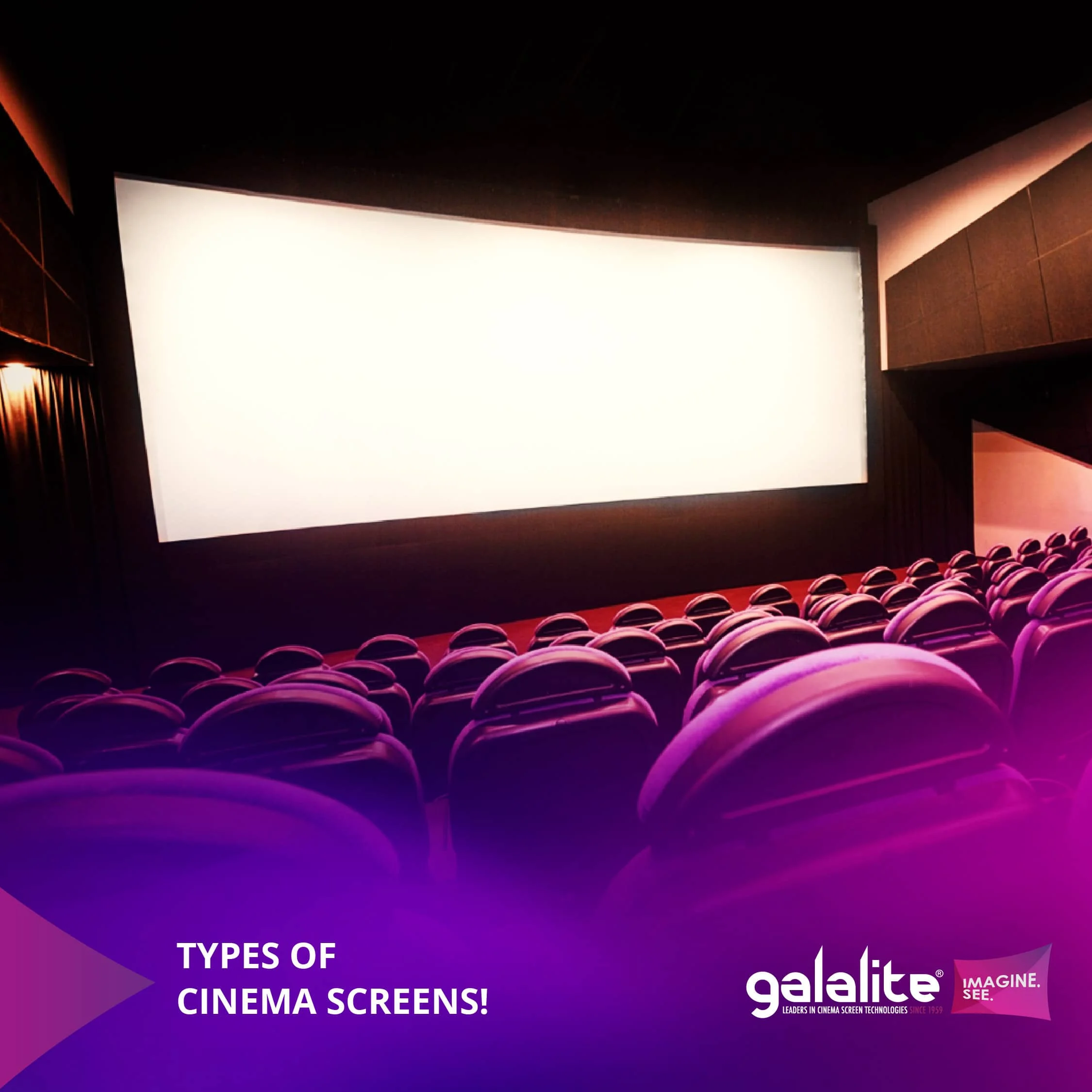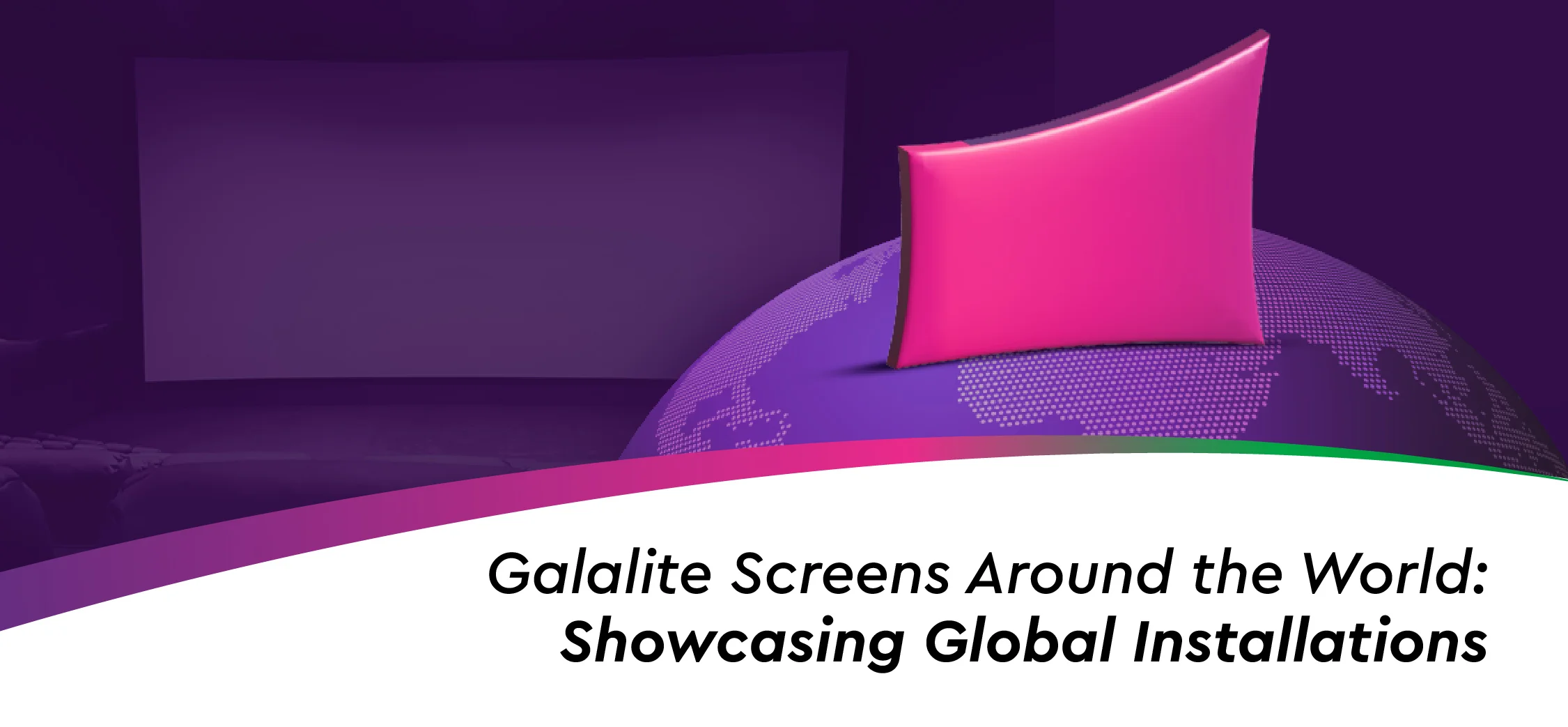
We all love big screens. But have you ever wondered if they are all the same?
They are certainly not.
You must have visited many theatres and watched movies on various screens. They all have made you happy in one or another way.
So why not talk about Cinema Screens today?
This blog post will help you understand what kinds of cinema screens exist and how they differ from each other.
So settle down, grab your popcorn and get ready to understand the mesmerizing world of Cinema screens.
There are 3 kinds of cinema screens:
- Front Projection Screen
- Rear Projection Screen
- 3D Projection Screen
Let’s get to know them one by one.
Front Projection Screen
A front projection screen is the one that directly reflects light off of the screen.
The core advantage of these kinds of screens is that the light path of the projector and the viewing area is the same which results in saving the venue square footage.
What makes it the best option for theaters and cinema halls is the fact that with front projection screens, you can place the projector to the ceiling which makes more space on the floor for a bigger audience to occupy.
The projector could be placed anywhere with front projection screens, especially a few feet away from the screen.
Darker interiors inside the cinema hall make for the best surrounding for these screens as they tend to perform more efficiently in darker rooms.
When it comes to viewing angles, the gain of the screen determines how narrower the view would be.
One of our front projection screens, Matte White is an ideal front projection screen for viewing films for it has a balanced screen gain of 1.1
Speaking about contrast levels on front projection screens, they are highly affected by ambient light. However, since the cinema halls are well built and keep no space for any ambient light to enter, this should not worry the theater owners much.
Rear Projection Screens
The rear projection screen diffuses light through the material from behind the screens.
The no.1 benefit of this screen is not having to deal with the bothering shadows that are reflected from the audience or any object that comes in between.
Although it is highly unlikely that there would be any ambient light in the cinema hall; even if it does, rear projection screens work much better in terms of contrast and color saturation even in high ambient light areas.
With the rear projection screen arrangement, all the material and settings are installed behind the screen. So, the positioning of the screen is away from the wall to make space for other equipment.
3D Projection Screens
This is undoubtedly one of the most fascinating forms of screens. If there’s anything that gives the audience the typical ‘larger than life experience in the cinema hall, it’s the movie experience on a 3D projection screen!
Silver screens that retain close to 100% of the polarization methods to allow the use of passive 3D glasses is what makes for a great 3D screen.
If the polarization is not 100% or even close to it, ghosting may occur which ruins the 3D experience.
That’s exactly what we monitor closely in our Prism 3D
Prism 3D is one of the projection screens made at Galalite Screens which gives less leakage of light during cross polarizer orientation. This leads the screen to perform stunningly with zero ghosting effect.
For cinema owners looking to buy good 3D screens, make sure to go for the brand that ensures a silver screen with passive 3D projection systems.
Hope this article did shed some light to help you improve your understanding of Front, Rear & 3D projection screens.
If you’re looking to buy cinema screens that would increase the footfall of your theater by constantly providing your audience with an experience ‘like never before, here’s how you can contact us –
Email us at info@galalitescreens.com
Call on: 022 2850 0681
Have any questions to clear? Put them in the comments below and we would be more than happy to assist!
Related articles



